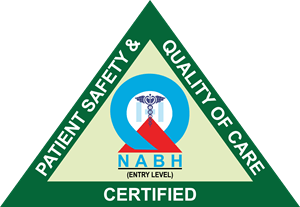Cardio Thoracic and Vascular Surgery - Open Heart Surgery
HEALTH SERVICES
Mitral Valve Replacement (Open heart surgery)
Mitral valve replacement is a cardiac surgery procedure in which a patient’s mitral valve is replaced by a different valve. Mitral valve replacement is typically performed robotically or manually, when the valve becomes too tight (mitral valve stenosis) for blood to flow into the left ventricle, or too loose (mitral valve regurgitation) in which case blood can leak into the left atrium and back up into the lung. Some individuals have a combination of mitral valve stenosis and mitral valve regurgitation or simply one or the other.
A mitral valve replacement/repair is performed to treat severe cases of mitral valve prolapse, heart valve stenosis, or other valvular diseases. Since a mitral valve replacement is an open heart surgical procedure, it requires placing the patient on cardiopulmonary bypass to stop blood flow through the heart when it is opened up.
A mitral valve replacement is necessary when the valve doesn’t open or close completely. When the valve narrows or is stenotic the valve doesn’t let blood flow easily into the heart causing the blood to "back up" and pressure to build up in the lungs. This is dangerous because when the leaflets in the valve don’t meet correctly, blood may leak backwards into the lungs each time the heart pumps. If blood leaks backwards, the heart has to pump harder in order to push the same amount of blood forward. This is known as volume overload. The heart may compensate for this overload for many months or even years but eventually the heart begins to fail and patients show symptoms of shortness of breath or fatigue.
Details of the Procedure
A mitral valve replacement procedure is performed under general anesthesia, which will keep the patient asleep during the whole surgery. The preferred method is to first make an incision under the left breast rather than through the breastbone in the front of the chest, to get to the heart. After the heart is exposed, blood must be rerouted to a heart-lung machine (cardiopulmonary bypass). An incision is made in the left atrium to expose the mitral valve. The valve is then replaced with either a biological valve or mechanical valve. The heart is then closed with sutures. The patient is then taken off the cardiopulmonary bypass and blood is allowed to flow into the coronary arteries. If the heart does not beat on its own, an electric shock is used to start it. Then the chest is closed up.
Web Search

